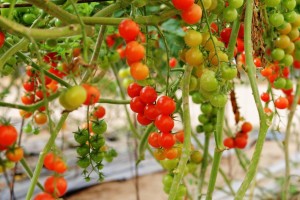 Plant labels can highlight the yearly perennials or the delicious edibles that you have tucked between your perennials or carefully lined up in your edible garden. Creating an edible landscape in your backyard is beneficial to you and branches out to benefit others.
Plant labels can highlight the yearly perennials or the delicious edibles that you have tucked between your perennials or carefully lined up in your edible garden. Creating an edible landscape in your backyard is beneficial to you and branches out to benefit others.
How can your edible landscape benefit others? You can donate food out of your garden to a local food pantry or pass food on to a few neighbors and relatives. But your garden can help even beyond that. By planting right outside your door, you can decrease the demand of shipping those foods across the nation, reducing air pollution.
Homegrown foods benefit the environment and your health. Produce that is plucked and that is eaten almost immediately is packed with the most nutrition. When edible shipments must traverse the country, they lose nutrients along the way. They may also be packed in pesticides and other chemicals while you might not use any in your gardens.
To transform your yard into an edible landscape you don’t have to uproot your current plants and start your design from scratch. Think about what you like to eat and what you could see working in your garden. Once you have a list started, start thinking about the needs of those plants. Do they prefer very well-drained warm spots or do they like more moist and shady spots? Start plugging those plants into the right spots in your yard based on drainage areas and hours of sunlight.
You could tear up your grass and create an edible oasis or you could use your current flower beds and add borders of curly-edged purple and green lettuce or low-growing herbs. Vines of clematis could be replaced by grapevines or other climbing edibles. Tomatoes and marigolds can be friends as well as roses and garlic. Books on companion plants can help you decide how to group your edibles and non-edibles.
Some gardeners design their garden so that something is always in bloom. You could fill in a sparse-looking edible garden with blooming plants that fill in spots after a plant has been harvested or before it matures. And many edibles have beautiful flowers, too. As your edibles bloom and are harvested you can pull your plant markers and plant labels out of the yard until next season or you can leave it as a reminder of your yard’s great diversity throughout the seasons.
While they are resilient and resistant to weather damage, plant labels on Kincaid Plant Markers can be easily changed. If you have the Brother P-Touch Label Printer, you simply re-print a new sticker for your garden marker. Or, if you use the Pro-Line HP marker, you can use mineral spirits to rub it off and then re-write a new plant’s name. So, take some of your hard gardening work and let it come back to you. Let your plant labels lead you to good nutrition and the anticipation of the next delicacy your garden will produce.
